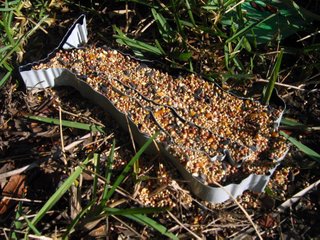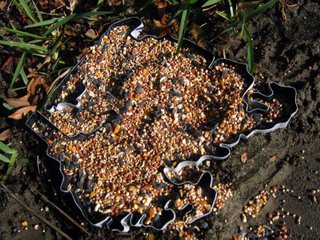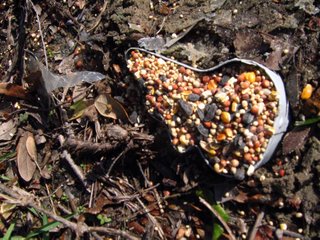Google Map






All I want to do is create beautiful surprises in this landscape & for this community who have (and continue to) suffer/ed their share of surreal visual surprises/abuses for the past year & a half. Just a reason to go, "What the heck?!" for something other than seeing a car on top of a house or a house upside down in the middle of a road or an empty field where your favorite grocery store used to be.
On a more personal level, I realize that many elements of this installation are honoring my sister Milissa who died a year ago December 16th. Also working so close to the house where I was living at the time of Katrina, I am confronting my own “flood lines” (I lost everything), literally and metaphorically. As I climb into the recesses of this dead tree, tenderly painting away, giggling and cold, trains passing, crows overhead, I am painting my way out of a grief that is both private and collective. One passerby said, “You’re brightening things up!” and this has become my mantra for the Pink Tree Pink.
It is in process now and will continue to evolve.
Be sure to say hi to Mr. Joseph Rooney (he lives right across the street from it) when you visit Pink Tree Pink (he planted this tree and the others around it - this stretch of land used to be his garden and he's just waiting for the city to come and clean it up so he can get to it again).







































